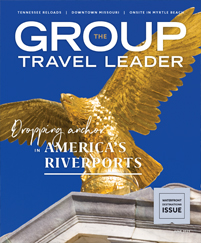Though the coast is the shortest of Georgia’s five edges, it may be one of the most exciting. Due to the Atlantic Ocean’s wave action, Georgia enjoys a practically uninterrupted string of barrier islands, many with nationally designated natural spaces that protect scenic harbors and soft beaches.
In just 100 miles of shoreline, both the barrier islands and the coastal cities they front run the full gamut of vacation environments. Want to get away from civilization? Head to Little Tybee Island. Want to shop and dine in high style? Try Savannah. Want to relax like a Rockefeller? Go to Jekyll Island. Want to savor the shrimp capital of the East? It’s Brunswick. Want to see wild horses, dolphins and turtles? Visit Cumberland Island. Just choose which box you want to check.
Little Tybee Island
From above, Little Tybee Island and the main Tybee Island could easily be confused for one contiguous entity. But although they are separated only by a delta of Lazaretto Creek, the two couldn’t be more different. Tybee Island, Savannah’s summer playground, bustles with ice cream shops, visiting families and arcades; uninhabited, undeveloped Little Tybee is a world away from civilization.
Despite its name, Little Tybee is twice the size of the main island. It is accessible only by boat, whether a motorboat charter, or a kayak or canoe, preferred for their low impact on the natural ecosystem. Sea Kayak Georgia can coordinate trips for groups of up to 50 at a time, with paddle-along guides to point out local wildlife and show you how to kayak with the dolphins.
Whether you visit for a few hours or the day, or camp overnight, Little Tybee offers a “Lost”-style experience without having to catch a plane. The island has no facilities, so everything must be brought in by boat, but the soft private beaches are available for picnics and camping.
While the islets in and around Little Tybee Island are calm and can accommodate beginning kayakers, those looking for a more challenging excursion can venture toward the ocean. The sandbars and other barrier islands around Little Tybee are a training ground for competitive sea kayakers.
Cumberland Island National Seashore
Of all Georgia’s barrier islands, Cumberland probably holds the most superlatives. It’s the largest in terms of land area and conservation area; contains some of the most unusual natural wildlife, like the photogenic feral horses; and has one of the richest histories, with Native American settlements dating back to at least 2000 B.C.
Groups can get to know the island by visiting Cumberland Island National Seashore. The ferry from St. Mary’s makes two stops, one at the Dungeness Ruins, the main historic area, and one at the Sea Camp Dock, where the ranger station is located and the beach is a quick quarter-mile walk away. Rangers organize walking tours of the historic district following the arrival of each boat at Dungeness, and a daylong van tour runs from Sea Camp.
Because the island has so many draws, the National Park Service takes extra steps to protect it from overvisitation. Maggie Tyler, chief of interpretation and education, warns that groups should book as far in advance as they can and try to be flexible with their itineraries if they’re set on visiting the island.
Cumberland Island has a daily visitation limit of around 300, roughly the capacity of the two ferries operated by Cumberland Queen Ferry that make the journey each day along with a few private charters. For trips March thr ough June, Tyler advises groups to call when reservations open up six months in advance to make sure they get a spot for the 45-minute ferry ride.











